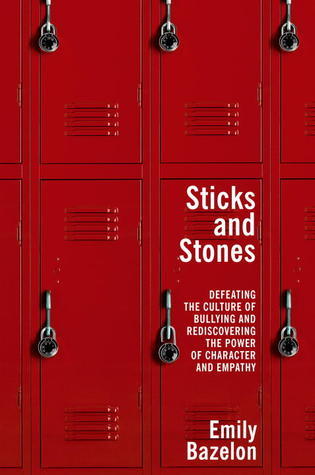What do you think?
Rate this book


Audio CD
First published February 19, 2013
Doing this right ... means recognizing that there is truth in the old sticks-and-stones chant: most kids do bounce back from cruelty at the hands of other kids. They'll remember being bullied or being a bully; they'll also learn something useful, if painful. "Children need to encounter some adversity while growing up," says Elizabeth Englander, a psychologist who is the guru of bullying prevention in Massachusetts. "Even though it's normal for adults to want to protect them from all meanness, or to rush to their defense, there's a reason why Mother Nature has promoted the existence of run-of-the-mill social cruelty between children. It's how children get the practice they need to copy successfully with the world as adults." [p.11]
The old problem was that adults were too prone to look the other way when powerful kids turned on weaker ones. This, of course, still happens, but we also have a new trap to watch out for: being too quick to slap the label of bully onto some kids and the label of victim onto others. It's a kind of crying wolf, and it does damage. For one thing, calling every mean comment or hallway clash bullying breeds cynicism and sucks precious resources from the kids who need our help. For another, it turns a manageable problem into an overwhelming one. [p.298]
And those are the ideas I'd like to leave you with: character and empathy. Most of the time, the old adage that adversity makes us stronger does hold true. We have to watch out for the kids whose internal makeup means they are the exceptions, but we also have to give the majority of teenagers the space to prove the rule. We have to be there for them, ad we have to stand aside. We have to know when to swoop in and save them, and when they have to learn to save themselves. And we have to make tricky decisions about the gray area in between those two poles.
We also have to instill in kids the paramount value of kindness - to show them that it's more important to come together than to finish first, that other people's feelings can take precedence over one's own, that relationships can matter more than tasks.
These are tall mountains to climb - don't I know it. These days, we have to make decisions about how much freedom to give our kids on two planes: the physical and the virtual. I sometimes fear that parents go too far in confining kids' real-world exploration - and then do little or nothing to track their travels online. And so kids strike out on their own where they can, including on their phones and on the Internet. [p.305]
Bullying is changing the way teenagers’ act, especially if they have been bullied. Sticks and Stones: Defeating the Culture of Bullying and Rediscovering the Power of Character and Empathy by Emily Bazelon. She not only tells the facts of bullying, but personal stories as well.
Emily takes us through the specific stories of Monique, Jacob, and Flannery, three middle school students. She writes how each was affected by the bullying that was forced upon them, and what they did to stop it. Along the way, Emily adds in lots of facts and studies about bullying. This is very useful information to tuck away into your head.
I thought that this book was O.K, but was definitely not my favorite. Sometimes it was hard to understand what Emily was saying, due to my small vocabulary range. However, it was interesting to hear about bullying stories such as Monique, Jacob, and Flannery. I thought that it was horrific how cruel kids could be, and what they were capable of.
This book would be a good read for adults. Preferably people that have children in high school or middle school. This way they can understand what some kids have to go through and can help their child understand too.